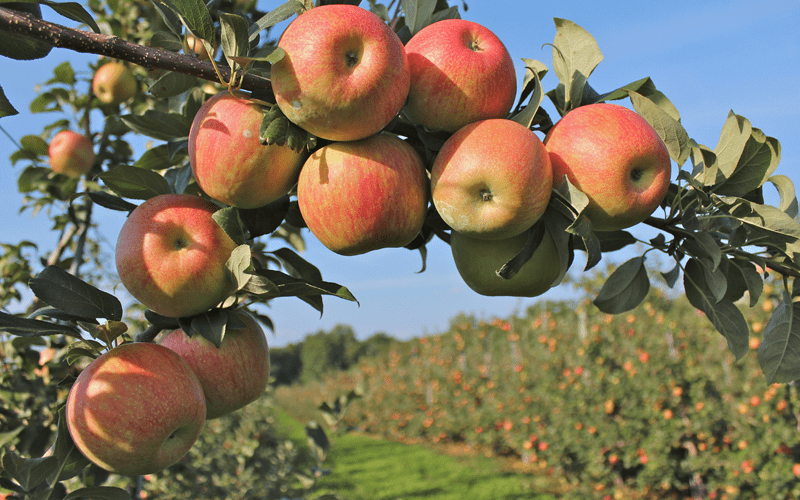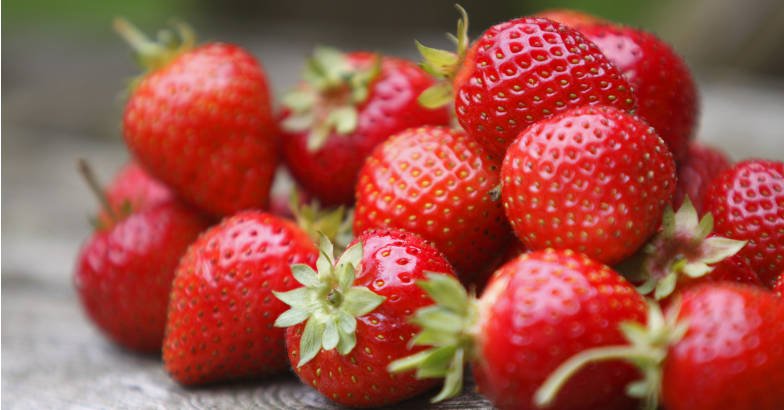Nestled in Kerala's cool hills, Kanthalloor is famous for its rare variety of plants and unique gardens. The crisp mountain air and rich soil make this region a true paradise for plant lovers, garden tourists, and anyone curious about nature's diversity. From colorful flower beds to lush fruit orchards, Kanthalloor plants draw in travelers, botanists, and local farmers year after year.
The village's plant life shapes local culture while fueling the area's tourism and horticulture markets. Whether you're planning to explore garden trails, discover seasonal blooms like the Neelakurinji Bloom in Kanthalloor, or just want to know about plant varieties and prices, Kanthalloor has something special for you. Each visit offers a fresh look at this striking corner of Kerala, promising vibrant sights and new discoveries in every season.
Unique Varieties of Kanthalloor Plants
Kanthalloor stands out as a botanical treasure chest tucked away in Kerala’s hills. With its constant mist, cool climate, and fertile valleys, this place nurtures an impressive spectrum of kanthalloor plants. From the juiciest fruits to stunning flowers and medicinal herbs, Kanthalloor’s plant life not only shapes its landscape but helps preserve the delicate ecosystems of the Western Ghats. The wide mix of fruits, vegetables, and endemic blooms means every stroll in Kanthalloor feels like nature’s showroom, always revealing something surprising.
Popular Fruit Varieties in Kanthalloor

Fruit lovers will feel right at home among Kanthalloor’s legendary orchards. You’ll find unique apple gardens, lush strawberry patches, and rare plums and pears—all thriving at altitudes and climates usually reserved for North India.
Top fruit highlights include:
- Apples: Grown at elevations that mimic the north, Kanthalloor’s apples come in crunchy Royal Delicious and sweet Granny Gold varieties. Their harvest season starts as early as mid-summer, with fresh apples hitting the local markets from July to September. These apples are crisp, mildly tangy, and often considered a local delicacy. For more details about these fruits, check out Top Fruits of Kanthalloor.
- Pears: Pear trees fill homestead gardens, producing juicy, subtle-flavored pears between August and October. Demand is steady, both among villagers and tourists.
- Plums: With a deep purple hue and tart-sweet bite, Kanthalloor’s plums are harvested from late July onwards. Their taste stands shoulder to shoulder with imported brands and they’re sought after for jams and preserves.
- Strawberries: Grown in neat, shaded rows, these berries ripen from December to March. They’re small, fragrant, and sweet—perfect for eating fresh or topping local desserts.
Kanthalloor’s cool air and pristine environment mean chemical use is low, making these fruits some of the freshest and healthiest you can find. The seasonal rush for apples and strawberries boosts the local economy and draws visitors from across the region, often sparking a festival-like buzz.
Many of these orchards also grow grapes, peaches, and rare berries, underscoring just how versatile the kanthalloor plants portfolio truly is. Learn more about apple orchards locally at Kanthalloor's apple orchards are a captivating sight.
Legendary Neelakurinji Bloom and Floral Diversity
Kanthalloor’s botanical fame peaks during the rare Neelakurinji bloom. This blue-purple wonder carpets the hills just once every 12 years, making it an unmissable event for travelers and botanists.
But Neelakurinji isn’t the only showstopper here. The region hosts several endemic wildflowers and medicinal herbs that thrive in its high-altitude forests. Rhododendrons and wild orchids add dashes of color, transforming Kanthalloor into a living bouquet, especially during the monsoon.
Why is Neelakurinji special?
- Endemic species: Found only in the Western Ghats, it paints the slopes bright blue. No other event highlights the plant diversity of Kanthalloor quite like this.
- Ecological value: Neelakurinji supports rare pollinators and offers a lifeline for mountain insects and birds.
- Tourism magnet: The bloom fuels eco-tourism, drawing camera-toting visitors eager to witness a true spectacle of nature.
If you want to plan a trip around this phenomenon, see the latest updates on the Neelakurinji Bloom in Kanthalloor. For a broader guide on Neelakurinji timing and what makes it tick, visit Neelakurinji Blooming Season from August 2018 to ....
Kanthalloor’s floral lineup doesn’t end there. Wild marigolds, begonias, balsams, and native herbs line walking paths and forest trails, balancing beauty with ecological importance. Many of these kanthalloor plants help regulate soil health and support rare insect life, quietly sustaining the region’s natural cycles.
Kanthalloor Plant Gardens and Cultivation Practices
Kanthalloor stands out for its patchwork of thriving gardens, from emerald fruit orchards to vibrant organic plots. The region’s cool air, high elevation, and steady mist nurture one of Kerala’s richest selections of kanthalloor plants. These gardens are more than scenic—they’re living examples of community farming, eco-friendly habits, and the balance between nature and people. Walking through Kanthalloor’s plant-filled trails, you’ll notice a steady shift toward sustainable farming and garden-based tourism.
Famous Gardens and Must-Visit Farms
 Photo by Michael Morse
Photo by Michael Morse
Exploring Kanthalloor’s gardens is a sensory adventure. Apple orchards line the valleys, while strawberry farms dot the slopes with sweetness from December to March. Many gardens are open to the public, combining farm stays with immersive activities like fruit-picking, feeding livestock, or just wandering the rows of seasonal blooms.
Some tips for a rewarding visit:
- Go Orchard-Hopping: Plan to wander apple gardens, strawberry fields, and even grape patches. Many local farmers welcome visitors and offer guided tours.
- Try Fruit-Picking: Seasonal harvests give you the chance to snip apples or collect strawberries straight from the plant. It’s a hands-on way to connect with the region’s most famous kanthalloor plants.
- Watch the Blooms: Time your visit during flowering seasons—especially for Neelakurinji! Don’t skip the marigold or lily gardens, which often peak just after the monsoons.
- Stay at a Farm: Many homestays now double as working organic farms where you can learn about native crops, composting, or traditional rainwater harvesting.
- Join a Workshop: Some large gardens host weekend events where you’ll learn grafting, berry jam-making, or the basics of eco-friendly farming.
For more ideas and travel tips, explore the Kanthalloor Travel Guide, which shares up-to-date info on seasonal hotspots, eco-tourism, and local events.
Eco-friendly farming and community gardens are gaining pace. Locals practice mixed cropping, natural pest control, and water-saving methods such as drip irrigation and mulching. Curious about how these gardens stay green and productive year-round? Kanthalloor’s climate plays a big role, keeping summer temperatures mild and delivering steady rainfall during the monsoon.
Recent trends include:
- Agroforestry: Mixing fruit trees, spices, and timber crops to mimic the natural forest. This method boosts soil health and protects water sources. Read more about these farming models in Kerala at Agroforestry in Kerala: A Tropical Model for Sustainable ….
- Organic Methods: Chemical fertilizers and pesticides are replaced with green manure and bio-pesticides, keeping fruits clean and soil alive. Details about Kerala’s approach can be found in this Kerala State Organic Farming Policy.
- Seasonal Crop Rotation: Traditional farmers rotate crops to avoid overusing the soil and encourage new varieties year after year.
Kanthalloor’s plant gardens offer much more than just pretty views. They’re a community tradition, a source of healthy food, and an open invitation for travelers to experience nature up close. Dive deep into the local vibe, taste fresh-picked fruit, and let these green spaces show you a gentler side of Kerala.
Seasonality and Pricing of Kanthalloor Plants
Kanthalloor plants go through natural cycles, where each season brings a fresh wave of color and harvests to the hills. This makes the timing of your visit crucial if you want to see certain blooms or get the best local produce. Beyond beauty, seasonality also shapes market prices, with demand and quality hitting peaks at different times of the year. Understanding how weather, climate, and traditions influence the rhythm of local gardens can help you plan a trip that’s as memorable as it is abundant.
Best Season to Visit for Plant Lovers: Blooms, Harvests, and Unmissable Events

Photo by Denisa Susca
With its cool highland climate, Kanthalloor has a calendar packed with plant activity year-round. Peak moments are scattered across the seasons, giving you a chance to choose what plants or produce you most want to see.
Key seasonal highlights:
- Winter to Early Spring (December–March): Strawberries reach their sweetest, with fields packed with red fruit. This is also the time when many gardens open for fruit-picking and local vendors offer just-harvested berries. Rhododendrons and wild orchids also flourish during these mild, misty months.
- Monsoon and Post-Monsoon (June–September): The hills explode with greenery, and medicinal plants grow fastest during rains. Apple picking begins in July and peaks by August. Marigold and lily blooms add color after the rains ease off.
- Rare Neelakurinji Bloom: While this magical blue carpet only appears every 12 years, its season brings record visitors and turns every walk into a photographer’s dream.
Many travelers visit for the combined draw of fruit harvests and flower blooms. If your travels hinge on a specific plant event or peak harvest, keep an eye out for announcements on local tourism sites or reference detailed travel guides like this 2 day Kanthalloor trip itinerary, which help you sync your trip with seasonal highlights.
During harvesting festivals, village markets fill with fresh kanthalloor plants, fruits, herbs, and spices at their best. These events let you mingle with farmers, discover local food traditions, and even join in fruit-picking contests or garden tours. No wonder many return to Kanthalloor each year for new sights and flavors!
Market Trends and Buying Tips: Seasonal Prices, Local Sourcing, and Sustainable Choices

Seasonality doesn’t just affect what you see in Kanthalloor—it shapes what you pay and what’s available at markets and gardens.
How Prices Fluctuate:
- Strawberry prices spike just after harvest starts, when supply is still catching up to tourist demand. In peak season, a kilo can go for as much as Rs 600, largely due to freshness and limited output (Kerala's strawberry season for the next seven months).
- Apple and plum prices remain steady but become most affordable right after harvest, as markets overflow with surplus.
- Vegetable rates often dip sharply after big harvests. Kanthalloor’s main market is known for fresh, affordable produce, especially post-monsoon (Huge relief for Kerala consumers as vegetable prices dip).
Buying Tips for the Savvy Plant Lover:
- Buy what’s in season. Produce harvested at its peak not only tastes better but also costs less and supports local farmers.
- Scout out smaller community markets and roadside stalls. It’s easy to find unique kanthalloor plants, rare herbs, or traditional seeds at lower prices than big town shops.
- Many gardens also sell direct to visitors. Picking your own fruit often means you pay less and get the freshest quality.
- Ask about organic or pesticide-free options. Many local farmers have shifted to natural growing methods—supporting them helps keep these practices alive.
If you’re after a deeper plant experience or planning to buy in larger quantities, tapping into local tours like the Kanthalloor Jeep Safari experience can help. Guided outings often take you straight to farms where you can talk to growers, learn about seasonal trends, and bring home hand-picked produce or seeds.
Supporting local growers and sustainable farming not only gives you the best the season offers, but also keeps Kanthalloor’s garden traditions strong for future visitors. Whenever markets overflow with color and choice, follow the crowd: in Kanthalloor, it usually leads straight to the freshest finds.
Preserving and Promoting Kanthalloor’s Botanical Heritage
Kanthalloor’s plant wealth isn’t just about rare apples or stunning wildflowers. It’s a living legacy shaped over generations, woven into the region’s stories, celebrations, and livelihoods. Today, locals and travelers work together to keep this botanical tapestry thriving. Explore how conservation efforts and individual choices help keep Kanthalloor’s gardens vibrant for years to come.
Community-led Conservation and Eco-Tourism
 Photo by Mikhail Nilov
Photo by Mikhail Nilov
Kanthalloor’s conservation movement is rooted in the people who call these hills home. Passionate growers, local leaders, and even student volunteers join hands for everything from seed-saving drives to replanting rare wild herbs.
Some villagers organize awareness walks to highlight the needs of endangered kanthalloor plants, while eco-clubs in schools teach the next generation to compost and plant trees. Homestay owners and farmers run community nurseries, sharing native saplings free of charge during planting season.
Eco-friendly farming is a big part of this culture:
- Many orchards use natural pest controls, compost, and green manure to keep soils rich.
- Water-conserving drip irrigation reduces waste and helps gardens survive dry spells.
- Mixed cropping—where fruit trees, spices, and medicinal herbs grow side by side—keeps pests low and pollinators happy.
Tourism also boosts these efforts. Farm stays and nature walks provide extra income for growers who focus on sustainable methods. Travelers get to witness authentic planting traditions, take part in community reforestation, or join guided herb-collection treks.
For a closer look at local initiatives and culturally sensitive eco-tourism, see the Kanthalloor Travel Guide. You’ll find tips on responsible trips that help support conservation right at the source. If you want to learn more about nature protection and the area’s unique culture, check out Kanthalloor: Kerala's Hidden Gem of Nature, Culture, and Calm.
Sustainable Practices for Gardeners and Visitors

Preserving the future of kanthalloor plants isn’t just up to farmers or tour guides. Anyone—whether you’re strolling a garden trail, buying fruit, or planting at home—can help protect this unique natural wealth.
Here’s how you can make a difference:
When visiting Kanthalloor:
- Stick to marked paths to avoid trampling wild plants or seedlings.
- Ask about organic or eco-certified gardens before booking tours or stays.
- Support local markets selling native fruits, herbs, and saplings grown through natural methods.
- Take only pictures, not wild plants or seeds, unless the grower offers them for sale.
- Join planting days if your timing is right; many gardens welcome volunteers or visitors during reforestation drives.
If you’re inspired to plant kanthalloor varieties at home:
- Buy seeds or young plants from registered nurseries or local farmers’ groups.
- Mimic natural growing methods by composting, rotating crops, and using organic mulch.
- Avoid using chemical pesticides which can harm pollinators and beneficial bugs.
- Share extra seeds or saplings with friends to spread awareness and support diversity.
- Learn more about natural pest management and soil health tailored to your local climate.
Your support helps keep rare and native varieties in circulation, giving small growers an income while helping conserve heritage crops. Every sustainable choice—however small—sows another seed for Kanthalloor’s future.
Ready for more hands-on tips and hidden corners to visit? Let the Kanthalloor Travel Guide help plan eco-friendly days out and connect you directly to the people shaping the region’s green legacy. Your participation isn’t just welcome, it keeps these hills blooming year after year.
Conclusion
Exploring Kanthalloor plants is a true treat for nature lovers, families, and anyone who wants a break from busy city life. The region’s vibrant gardens, rare fruit varieties, and seasonal blooms set it apart as a must-see stop in Kerala. Supporting eco-friendly farms and joining in community-led conservation keeps these hills green and the experience authentic for years to come.
Visiting with care means these rich botanical traditions last for future travelers. If you’re curious how Kanthalloor stacks up against other hill stations in the area or want deeper insights for your next trip, take a look at this Munnar vs Kanthalloor comparison. Every visit not only offers new discoveries but helps keep the spirit of Kanthalloor’s gardens alive. Thanks for exploring with us—share your own Kanthalloor plant stories and help spread the word about this beautiful destination.






